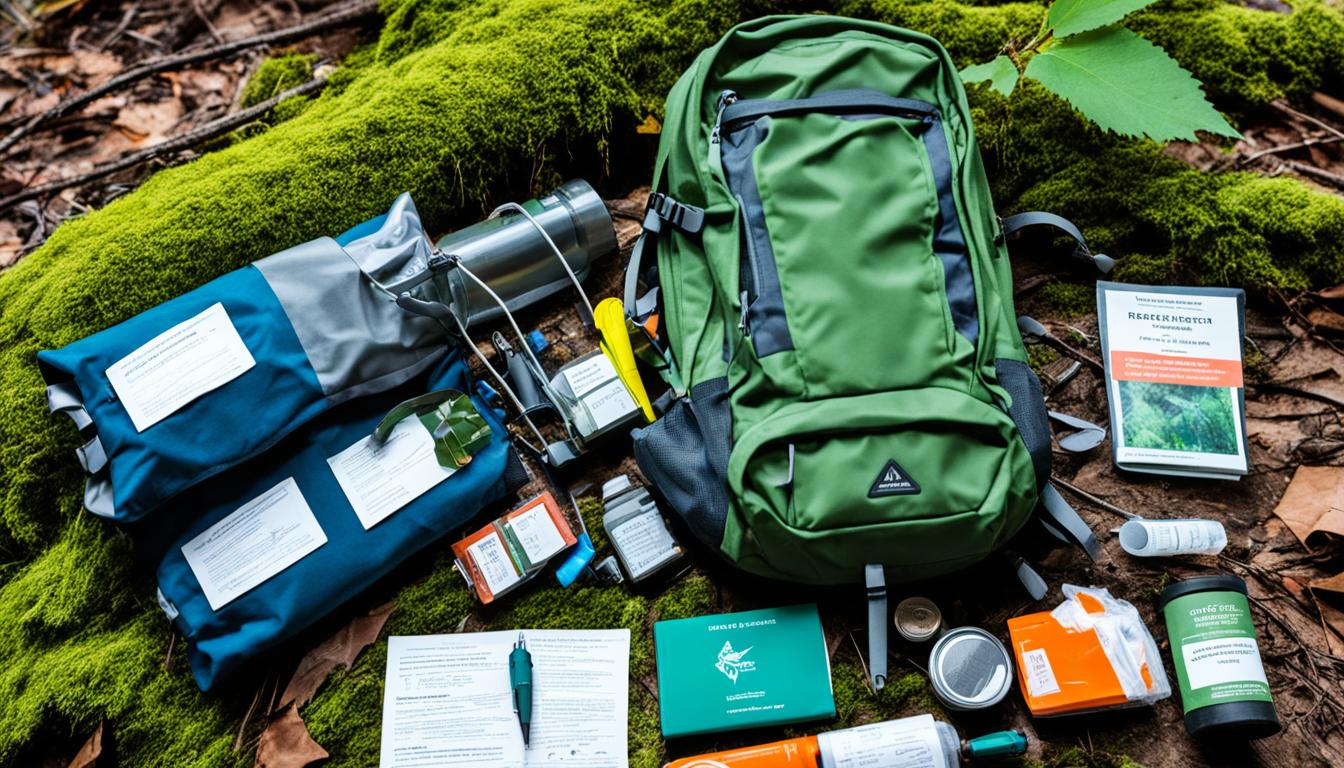In the face of unpredictable emergencies, having a well-designed bug out bag is crucial for my survival. However, determining the perfect weight for my bug out bag can be a delicate balancing act between essential supplies and mobility. In this article, I’ll guide you through the process of achieving the optimal bug out bag weight to ensure I’m prepared for any situation while maintaining the agility to move quickly to safety.
As an experienced prepper, I understand the importance of being ready for the unexpected. My bug out bag is my lifeline in times of crisis, containing the necessary provisions and tools to sustain me during an emergency evacuation. However, the weight of this bag can significantly impact my ability to navigate through challenging terrain or respond rapidly to a rapidly evolving situation.
Finding the perfect balance between preparedness and mobility is essential for my survival. I must carefully consider the factors that will influence the weight of my bug out bag, such as the terrain I may encounter, the duration of my potential displacement, and my own physical capabilities. By striking the right balance, I can ensure that my bug out bag is a strategic asset, not a burdensome liability.
Striking the Right Balance: The Importance of Bug Out Bag Weight
Preparing a well-equipped bug out bag is a critical aspect of emergency preparedness, but finding the perfect balance between the weight of your bag and its contents is no easy task. On one hand, you want to ensure that you have all the essential supplies and gear to sustain yourself in an emergency situation. On the other hand, you need to maintain a high level of mobility to quickly evacuate and reach a safe location.
Mobility vs. Preparedness: Finding the Sweet Spot
The weight of your bug out bag can significantly impact your ability to move quickly and efficiently during an emergency evacuation. Carrying a bag that’s too heavy can quickly lead to fatigue, making it difficult to cover long distances or navigate challenging terrain. Conversely, packing too lightly can leave you without the necessary supplies to survive for an extended period. The key is to find the sweet spot between mobility and preparedness, ensuring that your bug out bag is light enough to allow for swift movement while still containing the essentials.
Factors to Consider: Terrain, Duration, and Personal Capabilities
When determining the optimal weight for your bug out bag, there are several crucial factors to consider:
- Terrain: The type of terrain you may encounter during your evacuation, such as rugged hiking trails, urban environments, or uneven ground, will dictate the weight and type of gear you’ll need to carry.
- Duration: The expected length of your journey and the amount of time you may need to be self-sufficient will influence the quantity of food, water, and other supplies you’ll need to pack.
- Personal Capabilities: Your own physical strength, stamina, and mobility will play a significant role in determining the maximum weight you can comfortably carry without compromising your ability to move quickly and efficiently.
By carefully considering these factors, you can strike the right balance between the weight of your bug out bag and the essential supplies it contains, ensuring that you’re prepared to face the challenges of an emergency situation while maintaining the mobility to reach safety.
The Perfect Bug Out Bag Weight: A Tailored Approach
Achieving the perfect bug out bag weight is not a one-size-fits-all solution. It requires a tailored approach based on your unique needs, location, and physical capabilities. By customizing your gear and packing wisely, you’ll be well-equipped to face any emergency with confidence and agility.
When it comes to your bug out bag weight, there’s no universal formula that works for everyone. Your optimal load will depend on a variety of factors, including the terrain you might encounter, the duration of your potential evacuation, and your own personal capabilities. Take the time to assess your individual requirements and create a bug out bag customization that strikes the perfect balance between essential supplies and mobility.
Assessing Your Needs
Start by evaluating the type of emergency preparedness scenario you’re planning for. Are you in an urban area prone to natural disasters, or do you live in a more remote location where you might need to navigate rugged terrain? Consider the survival kits and outdoor gear you’ll need to address the specific challenges you could face.
Next, think about how long you might need to be self-sufficient. A bug out bag designed for a 72-hour evacuation will look very different from one intended for a week or more. Pack accordingly, ensuring you have the right balance of lightweight backpacking essentials and disaster planning supplies.
Finally, take an honest look at your own physical capabilities. Are you an experienced hiker who can comfortably carry a heavier load, or do you need to prioritize mobility and agility? The perfect bug out bag weight for you may be different from someone else’s, so don’t be afraid to adjust your packing list until you find the sweet spot.
Customizing Your Bug Out Bag
Once you’ve assessed your needs, it’s time to start customizing your bug out bag. Look for lightweight and multi-purpose items that can serve multiple functions, reducing the overall weight. Invest in high-quality, durable gear that won’t let you down in an emergency.
Remember, the goal is to create a bug out bag that is both comprehensive and manageable. By striking the right balance, you’ll be able to move quickly and efficiently when every second counts, ensuring your survival and resilience in the face of any disaster.

“The perfect bug out bag is the one you can actually carry and use when the time comes.”
Mastering the Art of Packing Light: Essential Tips and Tricks
When it comes to preparing for emergencies or disasters, the weight of your bug out bag is a critical factor. Packing light is an essential skill that can make the difference between being mobile and agile or feeling weighed down and restricted. In this section, I’ll share some invaluable tips and tricks to help you master the art of packing light without sacrificing the essentials.
Multi-Purpose Items: Maximizing Functionality and Space
One of the keys to a lightweight bug out bag is focusing on multi-purpose items that serve multiple functions. By carefully selecting gear and tools that can be used for a variety of tasks, you can significantly reduce the overall weight and volume of your bag. For example, a sturdy knife with a built-in can opener, wire cutter, and screwdriver can replace several individual tools, saving precious space and weight.
- Look for versatile items that can perform multiple tasks, such as a multi-tool or a survival knife.
- Opt for compact and collapsible versions of essential gear, such as a collapsible water bottle or a folding shovel.
- Consider materials like titanium or ultralight fabrics that offer durability without adding unnecessary weight.
By focusing on multi-purpose items, you can create a bug out bag that is both efficient and streamlined, making it easier to navigate through challenging terrain or situations.
“Packing light is not about depriving yourself, but about being intentional and strategic in your choices. Every item you include should serve a clear purpose and contribute to your overall preparedness.”
Remember, the goal is to strike a balance between what you need and what you can realistically carry. By mastering the art of packing light, you’ll be better equipped to handle the challenges of any emergency or disaster situation, whether it’s a natural disaster or a societal collapse.
Embracing Minimalism: The Path to Survival and Resilience
As I contemplate the challenges that may arise during emergencies, I’ve come to realize the power of embracing a minimalist approach to my bug out bag. By carefully selecting only the most essential items and leaving behind unnecessary weight, I can enhance my mobility, conserve energy, and increase my chances of reaching safety. This minimalist mindset is the key to survival and resilience in the face of unpredictable disasters.
Adopting a lightweight survival gear strategy not only lightens the physical load but also simplifies my decision-making process. Rather than being bogged down by a bulky bag filled with an abundance of gear, I can focus on the core essentials that will truly make a difference in a crisis. This streamlined approach allows me to navigate through treacherous terrain with greater ease, conserving vital energy that could mean the difference between life and death.
In the realm of outdoor adventures and emergency planning, self-reliance and resilience are paramount. By embracing minimalism, I’m empowered to take control of my preparedness and become truly self-sufficient. This mindset not only enhances my chances of survival but also instills a sense of confidence and adaptability that will serve me well in any challenging situation. As I continue to refine my bug out bag and streamline my gear, I know that I’m forging a path towards a more resilient and self-reliant future.



